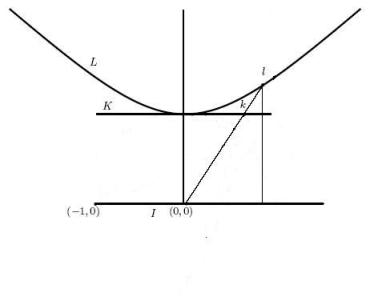Resurrecting this blog. Recently I have been giving lectures on hyperbolic geometry to my students including student trainees. The lectures allow me to brush up on basics of hyperbolic geometry for upcoming conference and also to help the trainees do their mini projects. I begin with the models of hyperbolic plane.
Hyperboloid Model
Everyone knows the unit (two-) sphere whose equation is :
If one changes the sign in one variable of the sphere-equation, , one obtains the one-sheeted hyperboloid:
If one changes the sign of the constant on the right hand side, , one gets the two-sheeted hyperboloid:
These disconnected pieces remind us the hyperbola curves we plotted in schools :
One should also mention the other possibility from the two-forms of the hyperboloid earlier, the one with zero on the right hand side, giving a double cone reminiscent of the light cones in relativity.
These null surfaces are the asymptotes of the hyperboloids (very much like the asymptotes of the hyperbola).
Returning to the double-sheeted hyperboloid; let us restrict to the positive sheet namely
it gives the hyperboloid model of the hyperbolic plane. The surface can be parametrised in ‘angular’ coordinates much in the same way as the sphere via
which leads to . Note the use of hyperbolic functions. Note also the form of bilinear form one can associate to
to form the equation of the hypwerboloid i.e.
Using this bilinear form, one could actually form the metric on by forming the product
to give
Beltrami-Klein Model
In the hyperboloid model above, it is tangent to the plane
of
. Next we project points on
to this plane by drawing a line to the origin (see Fig below).
The point is projected to the point
. By using similar triangles,
for
. Note that
.
Thus under this project the hyperboloid is mapped to a unit disk
, which is the Beltrami-Klein disk model of the hyperbolic plane. By using the inverse coordinate transformation
,
one can get the hyperboloid differentials in terms of these new coordinates as
for and
.
Hence the metric for the B-K disk to be
.
Hemispherical Model
Another interesting model is to project the points of hyperboloid further to a hemisphere (would aid us later to get other more convenient models).
The point is now projected down to
from
of B-K model where the additional coordinate is given by
. It is easy to show that these coordinates now form the equation of a (hemi-)sphere
.
Hence, the hemisphere model of the hyperbolic plane. Note that this (hemi-)sphere has a different metric inherited from the hyperboloid i.e.
.
Poincare Disk Model
Using the hemisphere model, we can now make a stereographic projection from to the plane
. The point
gets mapped to
on the Poincare disk
.
The relation between these coordinates are given by the similar triangle relations
.
One can work backwards (easier) to show that the Poincare disk metric
is equivalent to the metric of the hemisphere model earlier.
Upper Half-Plane Model
Now in the Poincare disk, we use the stereographic projection from to
plane. We could use a different projection namely from
on the hemisphere
to the plane
. The point
gets mapped to
on the plane mentioned.
The relation again between these coordinates are given by the similar triangles:
.
Unlike the earlier stereographic projection that squashes the hemisphere into a bounded (Poincare) disk, the present projection gives an unbounded plane due to the point gets mapped to infinity. Note also that
implies that
. The metric can also be worked (as in the previous case) to
.
This upper half plane can be realised as
.
This is probably one of the most convenient model to work with. It can be realised as a homogeneous space. Consider the action of on
given by the fractional linear transformation
where . Note the action of
gives the same effect. Thus the effective group is really
. The group action could also be conveniently put into matrix multiplication form in the following way:
.
It would seem like that each point on can be made in correspondence with each element of
but one ought to check if any of the group elements keep the point fixed. Consider for example the subgroup
. Elements
keeps
fixed:
.
Thus in general for each point there will be effectively an (conjugated) that keeps the point fixed. Thus the upper half plane can be realised as the quotient space
.
In the next few forthcoming posts, we will investigate this model of the hyperbolic plane further
References
- Pages from http://en.wikipedia.org/wiki/Main_Page
- S. Katok, “Fuchsian Groups, Geodesic Flows on Surfaces of Constant Negative Curvature and Symbolic Coding of Geodesics”, (http://www.math.psu.edu/katok_s/cmi.pdf)
- J.W. Cannon, W.J. Floyd, R. Kenyon & W.R. Parry, “Hyperbolic Geometry” (http://www.math.brown.edu/~rkenyon/papers/cannon.pdf)
- R. Hayter, “The Hyperbolic Plane – A Strange New Universe” (http://www.maths.dur.ac.uk/Ug/projects/highlights/CM3/Hayter_Hyperbolic_report.pdf)
- J. Hilgert, “Maass Cusp Forms on
“, (http://www.math.uni-paderborn.de/~hilgert/Metz05web.pdf)








